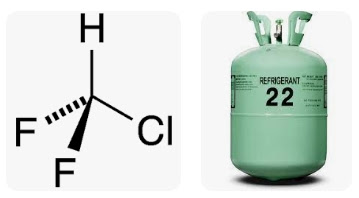HCFC-22 (also called R-22) and HCFC-142b are the next two HCFCs that the United States will phase out. The schedule to phase out HCFCs
Phasing Out HCFC Refrigerants To Protect The Ozone Layer
What you need to know when servicing or replacing an air conditioner in your home?
HCFCs and the Ozone Layer
The stratospheric ozone layer shields the Earth from the sun’s harmful ultraviolet radiation. Emissions of certain synthetic chemicals—including CFCs, halons, and HCFCs—destroy the ozone layer, and have created an “ozone hole” over the South Pole. Through the Montreal Protocol on Substances that Deplete the Ozone Layer, the United States committed to a collaborative, international effort to regulate and phase out ozone-depleting substances. While the US phased out of CFCs and halons in the mid 90’s, we now must reduce HCFC consumption in a step-wise fashion.
Phaseout of R-22 and R142b
January 1, 2010
January 1, 2015
January 1, 2020
January 1, 2030
What are HCFCs and R-22?
Hydrochlorofluorocarbons, or HCFCs, are chemicals that are mainly used as refrigerants. Unfortunately, releases of HCFCs deplete the Earth’s protective ozone layer and contribute to climate change.
R-22 is an HCFC refrigerant that is often used
in air-conditioning equipment. To protect the
Earth’s protective ozone layer, the United
States is phasing out R-22, along with other
chemicals.
As the United States phases out refrigerant
R-22, you will need to make informed choices
when servicing, repairing, or replacing
an existing air-conditioning unit or when
purchasing a new unit. EPA has banned the
manufacture of new equipment that contains
R-22. As a homeowner, you need to consider
and balance several key factors in your
decision to purchase a new unit, such as
energy efficiency, performance, reliability,
cost, and the refrigerant used.
The lengthy phaseout period allows you to replace your air-conditioning equipment that contains R-22 when you normally would, for instance if it becomes old, inefficient, or ineffective. Realizing that supplies of R-22 will become more limited and that the price may increase should also be factors. In the meantime, R-22 remains available for servicing equipment made before 2010.
Availability and Cost of R-22
R-22 is a refrigerant that is often used in airconditioning equipment.
Because R-22 depletes the ozone layer, production and import was further limited in 2010.
In 2020, R-22 will no longer be produced or imported. After 2020, only recovered, recycled, or reclaimed supplies of R-22 will be available.
The production (not use) of R-22 is being phased out. You are not required to stop using R-22 air conditioners nor to replace existing equipment.
The phaseout period provides time to switch to ozone-friendly refrigerants when you normally would replace your air conditioner.
In the future, R-22 supplies will be more limited and costs to service equipment with R-22 may rise.
Servicing Systems with R-22
You may continue to have your equipment containing R-22 serviced.
The most important thing you can do is to maintain your unit properly. Appropriate servicing minimizes potential environmental damage and maintenance costs.
It is important to select a reliable service contractor. Technicians must have EPA Section 608 certification to service equipment containing R-22.
Request that service technicians locate and repair leaks instead of “topping off” leaking systems. This protects the ozone layer and saves you money by optimizing performance of your existing equipment.
It is illegal to intentionally release any refrigerant when making repairs. Technicians must use refrigerant recovery equipment during service.
Buying a New Air Conditioner
EPA has prohibited the manufacture of new air-conditioning systems that use R-22. Systems that use alternative refrigerants that do not harm the ozone layer are available and will become more common.
New energy efficient air conditioners save energy costs. Even if your air conditioner is only 10 years old, you may save significantly on your energy costs by replacing it with a newer, more efficient model.
Energy efficiency is measured by the seasonal energy efficiency ratio (SEER). The higher the ratio, the more efficient the equipment.
A central air-conditioner that has earned the ENERGY STAR® label is at least 14% more efficient than a standard new system and can save you money on your cooling bill.
ENERGY STAR® qualified systems are available for both R-22 and alternative (R-410A) systems.
Alternative Refrigerants
The most common alternative to R-22 is R-410A, a non-ozone-depleting HFC refrigerant blend.
R-410A is manufactured and sold under various trade names, including GENTRON AZ-20®, SUVA® 410A, and PURON®.
EPA reviews alternative refrigerants and maintains a list of acceptable substitutes for household and light commercial air conditioning.
It is illegal to intentionally release refrigerant substitutes when making repairs. Technicians must take efforts to avoid releases during service.
Official document: https://www.epa.gov/sites/default/files/2015-07/documents/phasing_out_hcfc_refrigerants_to_protect_the_ozone_layer.pdf














%20Desember%202022%20(10).jpeg)






KOMENTAR